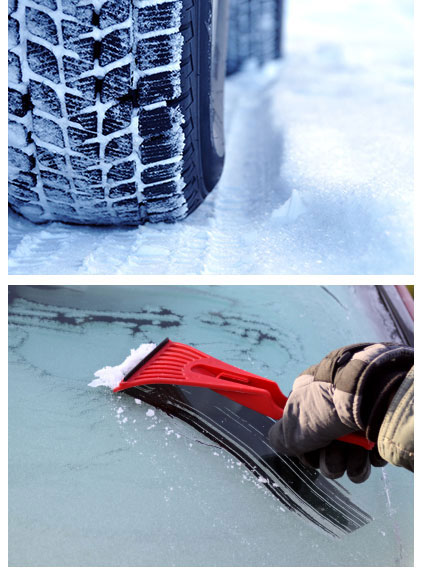|
Telephone +44 (0) 28 9039 4491 • Freephone +44 (0) 800 223 0364 • Email info@businesscs.co.uk
|
Are your drivers winter-ready?
 Many of our travel plans were disrupted by the severe snow last year and businesses suffered as a result of the freezing conditions.
Many of our travel plans were disrupted by the severe snow last year and businesses suffered as a result of the freezing conditions.
This year, make sure you and your drivers are well prepared for the adverse winter weather.
By spending time getting ready for the snow and ice, we can all help keep the country on the move.
Vehicle checks
- Make sure lights are clean and that the bulbs are all working.
- Check that your battery is fully charged.
- Check your tyre condition, tread depth and pressure (even on your spare).
- Clean your windscreen.
- Make sure your brakes are working well.
- Top up your fluids, especially windscreen wash (to the correct concentration to prevent it freezing), anti-freeze and oil.
Be prepared
- Allow extra time in severe weather.
- Check traffic and weather updates before you set out.
- Gather useful items for an emergency kit including:
- an ice scraper and de-icer,
- a torch and spare batteries,
- a first aid kit,
- jump leads and tow rope,
- a shovel, and
- blankets and warm clothes.
- an ice scraper and de-icer,
- Take some food and a warm drink in a flask in case you get
- stuck. If you have prescription medication, bring this with you too.
During your journey
- Clear any snow and ice from all windows, lights and number plates. On longer journeys, stop regularly to do this.
- Stick to the main roads which are less exposed and will be more likely to be gritted.
- Leave plenty of room between your vehicle and the vehicle in front. At 40 mph you should be 8-12 car lengths apart!
- If the car starts to slide when you apply the brakes, stop braking immediately and then apply them again, but more slowly.
- If you slide, steer into the skid and keep your feet off the brake and accelerator until the vehicle is back under control.
- Stay in a higher gear for better control, and if it is slippery move off in a higher gear.
- Slow down in plenty of time before bends and corners.
- Use dipped headlights if there is reduced visibility.
If you get stuck
- Move your vehicle slowly backwards and forwards out of the rut using the highest gear you can.
- Don’t rev your engine as this will just make the rut worse.
- Use a shovel to clear some of the snow.
- If you are stuck, wrap up to keep warm.
- Don’t run the engine if the exhaust pipe is blocked by snow as you could be overwhelmed by carbon monoxide.
- If the pipe is not blocked, only run the engine about 15 minutes every hour to conserve fuel and leave a window open ever so slightly.
For further information please contact info@businesscs.co.uk

